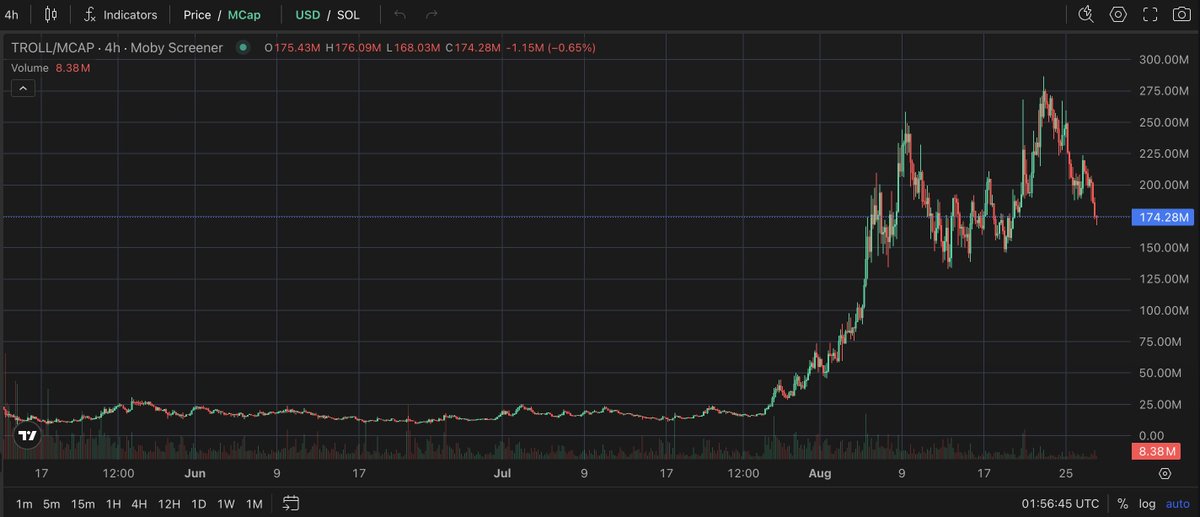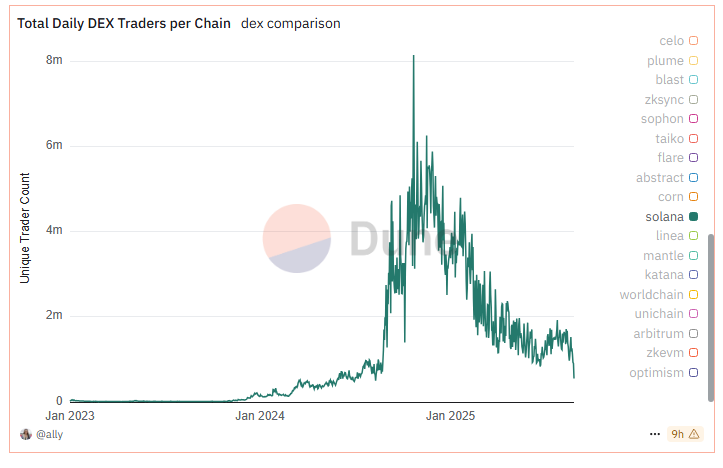Mask Network-hinta
valuutassa AUD

Tietoja kryptosta Mask Network

Vastuuvapauslauseke
OKX ei tarjoa sijoitus- tai omaisuussuosituksia. Sinun on harkittava huolellisesti, sopiiko digitaalisten varojen treidaus tai hallussapito sinulle taloudellisen tilanteesi huomioon ottaen. Ota yhteyttä laki-/vero-/sijoitusalan ammattilaiseen, jos sinulla on kysyttävää omaan tilanteeseesi liittyen. Lisätietoja on käyttöehdoissa ja riskivaroituksessa. Käyttämällä kolmannen osapuolen verkkosivustoa (”TPW”) hyväksyt, että kolmannen osapuolen verkkosivuston käyttöön sovelletaan kolmannen osapuolen verkkosivuston ehtoja. Ellei nimenomaisesti kirjallisesti toisin mainita, OKX ja sen kumppanit (”OKX”) eivät ole millään tavalla yhteydessä kolmannen osapuolen verkkosivuston omistajaan tai operaattoriin. Hyväksyt, että OKX ei ole vastuussa mistään menetyksistä, vahingoista tai muista seurauksista, jotka aiheutuvat kolmannen osapuolen verkkosivuston käytöstäsi. Huomaathan, että kolmannen osapuolen verkkosivun käyttö voi johtaa varojesi menetykseen tai vähenemiseen. Tuote ei välttämättä ole saatavilla kaikilla lainkäyttöalueilla.
Krypton Mask Network hintasuoritus
Mask Network sosiaalisessa mediassa


Oppaat

Luo ilmainen OKX:n tili.
Lisää varoja tilillesi.
Valitse kryptosi.
Mask Network UKK
Mask Network on alusta, jonka avulla käyttäjät voivat käyttää Web3-tilaa Mask Networkin laajennuksen kautta. Se mahdollistaa sosiaalisen median alustojen vuorovaikutuksen kryptovaluutta- ja hajautettujen sovellusten (dAppit) kanssa. Mask Network tukee useita lohkoketjuja, kuten Ethereumin, Binance Smart Chainin (BSC) ja Polygonin, mikä tekee siitä yhteentoimivan palvelun.
Mask-verkon käyttämisellä on useita etuja. Protokolla tarjoaa käyttäjille lisäturvaa turvallisuutta, koska hän antaa heidän piilottaa sisältöään uteliaille silmille ja näyttää sen vain aiolliselle аудиoritiltaan. Lisäksi käyttäjät voivat lähettää salattuja viestejä, mikä parantaa turvallisuutta entisestään. Mask-verkon käyttäjät voivat treidata NFT:illä suoraan sosiaalisesta mediaplattfeista, mikä on mahdollista maailman suurimmista NFT-markkinapaikoista.
Tutustu tarkemmin Mask Network-rahakkeeseen
Lohkoketjuteknologian ja kryptovaluutan dynaamisessa maisemassa on jatkuva pyrkimys siirtää sillalla hajautetun verkon ja perinteisen internetin välistä kuilua.
Tämän siirron helpottamiseksi on syntynyt Mask verkko (MASK), innovatiivinen alusta, joka on omistettu yhdistämään sosiaalinen verkko lohkoketju-teknologiaan, auttamaan maailmaa siirtymään Web2:sta Web3.
Mikä on Mask verkko
Mask verkko on erottuva yhdistelmä protokollia ja sovelluksia, jotka on suunniteltu tuomaan lohkoketjun toiminnallisuus ja hyödyt valtavirtaan. Maskiverkon tarkoituksena on olla yhdyskäytävä, joka sallii käyttäjänsä päästä Web3:n maailmaan laajennuksensa kautta. Mask verkon avulla käyttäjä voi kokea treidaus kryptovaluutat, käyttää hajautettu rahoitus (DeFi) platforms -alustoja ja tutustua ei-vaihtokelpoinen rahake (NFT) (NFT) maailmaan samalla kun hän selaa rauhassa Twitteriä tai Facebook-syöttelyä. Alusta haluaa myös puuttua sosiaalisen median turvallisuusongelmiin, sallia käyttäjän pitää sisältönsä piilossa ja näyttää sen vain kohdeyleisölleen.
Maskiverkon tiimi
Suji Yan, kokenut yrittäjä ja sijoittaja, jolla on syvällinen tietämys lohkoketjuteollisuudesta, vetää Mask verkon tiimiä. Häntä tukevat avainjäsenet, kuten teknologiajohtajana toimiva Zhu Hua ja operatiivinen johtaja Zheng Jie.
Yhdessä he ovat aktiivisesti mukana useissa hankkeissa, jotka keskittyvät internetin hajauttamiseen ja turvaamiseen. Tämä sisältää hajautetun viestintäjärjestelmän, turvallisen hajautetun tiedostojen tallennusratkaisun ja hajauttamisen periaatteille rakennetun maksualustan kehittämisen. Tiimi on omistautunut tehtävälleen luoda turvallisempi ja hajautetumpi Internet-ympäristö.
Miten Mask verkko toimii
Mask verkko toimii perustavoitteenaan yhdistää sosiaalisen median alustat saumattomasti hajautettuun verkkoon. Se saavuttaa tämän käyttämällä selainlaajennusta, joka toimii yhdyskäytävänä, jonka avulla käyttäjä voi käyttää hajautettu sovellus (dApps) suoraan tutuissa sosiaalisen median käyttöliittymissään.
Seuraavat ovat keskeisiä komponentteja, jotka ohjaavat Mask verkon toimivuutta:
- Mask verkko -lisäosa: toimii ydintyökaluna, joka integroi Mask verkon ominaisuudet sosiaalisen median alustoihin. Tämän laajennuksen avulla käyttäjä saa mahdollisuuden lähettää ja vastaanottaa salattuja viestejä, kauppa kryptovaluutat, olla vuorovaikutuksessa DeFi-alustojen kanssa ja olla tekemisissä NFT:n kanssa sosiaalisessa mediassa syöte.
- Decentralized Social Networking (DApplets): nämä ovat hajautettu sovellus, joka on integroitu saumattomasti Mask verkko -laajennukseen. Hyödyntämällä hajautettuja sovelluksia käyttäjä voi suorittaa monenlaisia tehtäviä, kuten treidaus krypto varaa, lainasopimusten tekemistä, kyselyjen tekemistä ja paljon muuta, kaikki suoraan sosiaalisen median sivuiltaan.
MASK tokenomiikka
Naamioverkon elinkeinorakenne tai tokenomiikka pyörii sen alkuperäisen hyödykkeen, MASKin, ympärillä. MASK-rahaken kokonaistarjonta on rajoitettu 100 miljoonaan.
MASK rahake jaetaan käyttäjälle eri mekanismeilla, kuten likviditeetin louhinta, palkkiot sisällöntuotannosta ja verkko participation.
MASKin käyttötapaukset
MASK rahake tarjous monipuolinen hyöty Mask verkko ekosysteemissä. Ne toimivat hallintorahakkeina, jotka antavat haltijalle mahdollisuuden osallistua verkon kehitystä muokkaaviin päätöksentekoprosesseihin.
Lisäksi MASK rahake voi olla steikkaus DeFi-protokollissa, sallia käyttäjä ansaita palkkiot tai osallistua tuoton viljelyyn. Lisäksi rahakkeilla on toiminnallisuus NFT:n alalla, jonka avulla käyttäjä voi luotua, ostaa, myydä, tai huutokaupata näitä ainutlaatuisia digitaalisia vara.
MASK-jakauma
MASK-rahakkeen jakauma on seuraava:
- 30 prosenttia: julkinen sale
- 15 prosenttia: Mask verkko team
- 10 prosenttia: ekosysteemi partners
- 20 prosenttia: likviditeetin louhinta
- 25 prosenttia: Yhteisön airdrop
Tie edessä Mask verkko
Myy lyhyeksi -termillä Mask verkko pyrkii laajentamaan kattavuuttaan lisäämällä lohkoketjuja ja hajautettuja sovelluksia.
Pitkä positio haul Mask verkko pyrkii vakiinnuttamaan asemansa oletusvalintana lohkoketjun yksityisyyden takaamiseksi. Tiimi haluaa tehdä MASKista verkon, jossa käyttäjä voi vapaasti vaihtaa salattuja viestejä, navigoida verkossa yksityisessä tilassa ja hyödyntää hajautettuja sovelluksia ilman jatkuvaa huolta siitä, että heidän tietojaan valvotaan tai kaupallistetaan.
ESG-tiedonanto





































